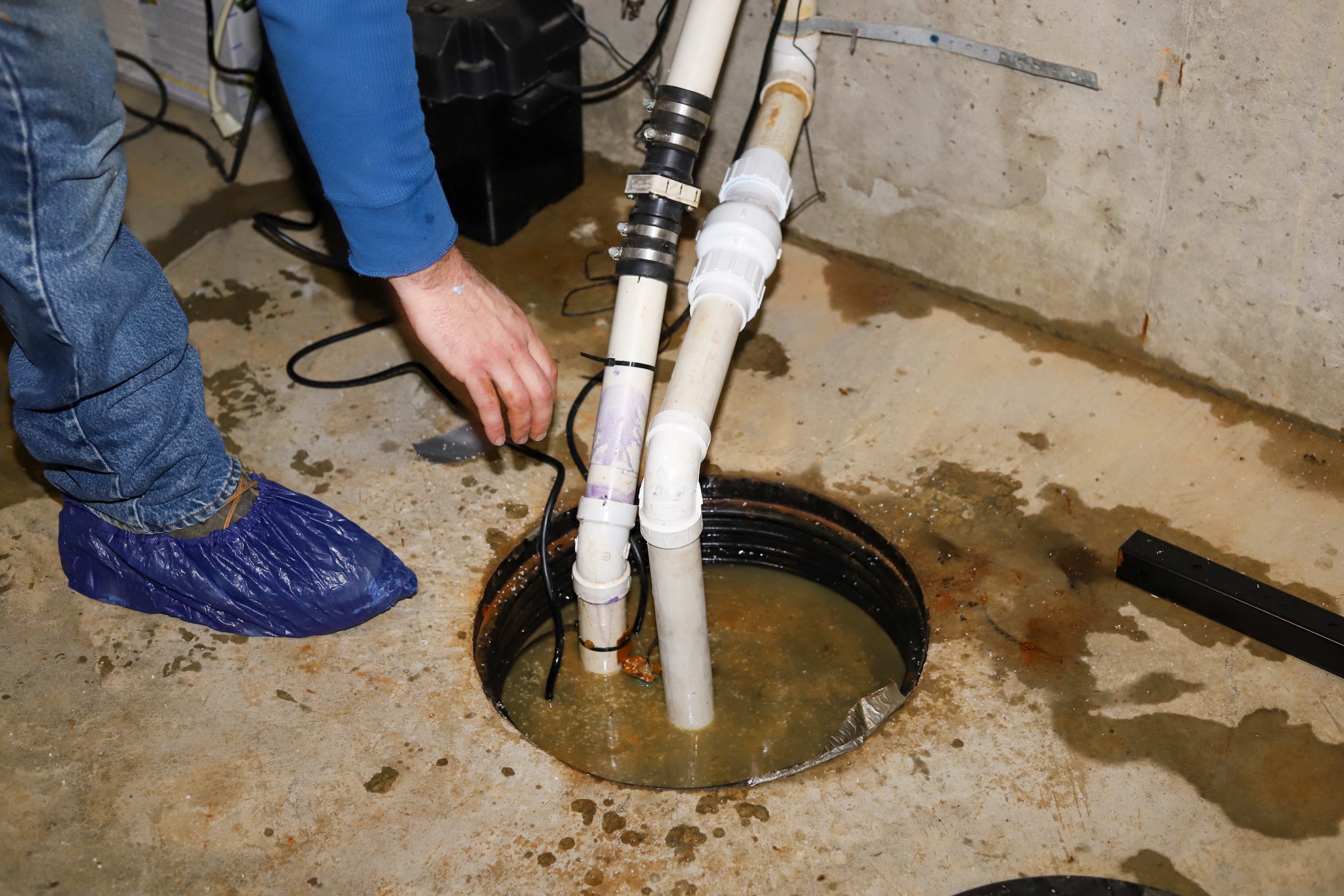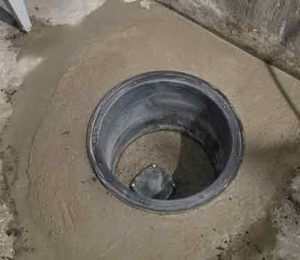An Guide to Carefully Taking Care of a Sump Pump
An Guide to Carefully Taking Care of a Sump Pump
Blog Article
Listed here in the next paragraphs you can locate additional quality news concerning Steps to Cleaning Your Sump Pump Properly.

Sump pumps are critical elements in numerous homes, especially in areas vulnerable to flooding or too much moisture. They aid stop water damages by effectively getting rid of excess water from cellars or crawl spaces. However, like any other appliance, sump pumps need regular upkeep to guarantee they function properly when needed one of the most. Cleansing your sump pump is an important part of its upkeep, and recognizing just how to do it properly can conserve you from expensive repair work and potential disasters.
Intro
Maintaining a clean sump pump is essential for its correct performance and longevity. Overlooking this necessary job can lead to blockages, malfunctions, and inevitably, water damages to your residential or commercial property. Therefore, discovering how to clean a sump pump is critical for home owners who count on these devices to keep their cellars completely dry and secured.
Indicators of a Dirty Sump Pump
Knowing when your sump pump needs cleaning is crucial for protecting against potential breakdowns. Some typical indicators that indicate a filthy sump pump consist of strange noises during procedure, decreased water flow, and noticeable particles in the pit. If you see any one of these signs, it's vital to cleanse your sump pump quickly to prevent any more concerns.
Planning for Cleaning
Prior to you begin cleansing your sump pump, it's necessary to take some safety preventative measures. Start by shutting off the power to the pump to prevent any electrical crashes. Furthermore, put on suitable safety gear, such as handwear covers and safety glasses, to protect yourself from dirt, debris, and possible microorganisms.
Comprehending the Sump Pump
Prior to diving into the cleansing process, it's important to have a standard understanding of exactly how a sump pump works. Generally set up in a pit or basin below the cellar flooring, a sump pump includes a number of essential components, consisting of a pump, a float switch, and a discharge pipeline. When water collects in the pit, the float switch turns on the pump, which after that pumps the water out via the discharge pipe, far from the structure's foundation.
Detailed Guide to Cleansing a Sump Pump
Turning off the Power
Begin by separating the power supply to the sump pump to prevent any type of accidents while cleaning.
Checking for Proper Performance
Prior to re-installing the pump, execute a quick test to guarantee that the float switch turns on the pump appropriately. Put some water right into the sump pit and observe the pump's procedure. If every little thing is operating properly, you can reassemble the pump and reconnect the power supply.
Eliminating Debris and Dust
Utilize a bucket or a scoop to remove any type of noticeable debris, dirt, or debris from the sump pit. Dispose of the debris properly to avoid it from blocking the pump or the discharge pipe.
Cleaning the Pump and Float Change
As soon as the pit is free from particles, very carefully eliminate the pump from the pit. Evaluate the pump and the float button for any type of indicators of damage or wear. Make use of a soft brush or towel to clean the surface areas and remove any type of gathered crud.
Flushing the System
After cleaning up the pump and float button, purge the sump pit with clean water to get rid of any kind of staying dirt or debris. This will certainly aid ensure that the pump runs efficiently and effectively.
Maintenance Tips to Maintain Your Sump Pump Clean
Along with periodic cleansing, there are numerous maintenance pointers you can follow to keep your sump pump in optimum condition:
Verdict
Cleansing your sump pump is an essential element of its maintenance and guarantees that it operates effectively when you require it the most. By adhering to the steps described in this overview and integrating normal maintenance into your routine, you can expand the life expectancy of your sump pump and safeguard your home from water damages.
6 STEPS ON HOW TO CLEAN A SUMP PUMP PROPERLY
UNDERSTANDING SUMP PUMPS
Your sump pump plays a crucial role in protecting your home by managing and removing excess water. It primarily functions as a “shield”, guarding your basement against the damaging effects of water accumulation. The pump is housed in a sump pit in the lowest part of your basement, and its job is to pump out any water that collects there.
During heavy rainfalls or when snow melts rapidly, water can infiltrate your basement, posing potential risks like flooding, structural damage, and harmful mold growth. Here, the sump pump springs into action, pumping out the intruding water and directing it away from your home.
SAFETY FIRST
Before cleaning, remember to prioritize safety. Disconnect the sump pump from the power source to prevent any accidental electric shocks. Also, wear sturdy gloves to protect your hands from any sharp or dirty components within the pump.
REMOVE THE SUMP PUMP
After ensuring your safety, the next step is to remove the sump pump from its pit. Doing this might require careful maneuvering as you don’t want to damage any pump components. Once removed, clean the sump pit to remove any accumulated debris or sludge.
INSPECT THE PUMP
Inspect the pump for any visible signs of wear or damage. Check the power cord, float switch, and impeller housing. If any components look worn out or damaged, consider replacing them to ensure optimal performance.
CLEAN THE PUMP
Thoroughly clean the pump with warm, soapy water. Make sure to rid it of any dirt, gravel, or other debris that might impede its performance. You can use a toothbrush to clean the small, hard-to-reach parts of the pump.
REINSTALL THE SUMP PUMP
Reinstall the pump into the sump pit Make sure it’s positioned correctly to remove the water effectively Once it’s back in place, reconnect it to the power source TEST THE PUMP
Finally, pour some water into the pit to ensure the pump works correctly. It should start automatically and begin pumping out the water; if it doesn’t, check the power source and the positioning of the pump.
Remember, while cleaning your sump pump is an essential part of home maintenance, hiring a professional plumber for a thorough inspection and cleaning at least once a year is also important. This will ensure that your pump is in optimal condition, ready to protect your home from potential water damage.
BEST PRACTICES FOR CLEANING SUMP PUMP DISCHARGE PIPES
Regular Inspection: Regularly inspect your discharge pipes, especially during heavy rainfall or snowmelt periods. Look for any signs of blockage or damage. Early detection of problems can prevent serious issues down the line. Periodic Cleaning: Over time, sediment and debris can accumulate in the discharge pipes, impeding the flow of water. Regular cleaning helps keep the pipes clear and functioning efficiently. You can use a high-pressure water jet to effectively clean the pipes. Insulation During Winter: In colder climates, discharge pipes can freeze, blocking the outflow of water. Protect your discharge pipes from freezing temperatures by insulating them with foam pipe insulation. This will ensure the sump pump can continue to discharge water even in freezing conditions. Proper Positioning: The discharge pipe should be positioned to direct water away from your home’s foundation. Improper positioning can lead to water seeping back into the basement. Ensure the pipe is long enough and angled correctly. Installation of a Check Valve: A check valve prevents water from flowing back into your sump pit after the pump has pushed it out. Installing a check valve helps maintain the efficiency of your sump pump and reduces the risk of flooding. Minimize Pipe Turns: Every curve or turn in the discharge pipe can decrease the efficiency of water flow. By minimizing turns and bends in your discharge pipe, you can increase the efficiency of your sump pump. https://www.fullspeedplumbing.com/how-to-clean-a-sump-pump-properly9999/

Do you like more info about Steps to Cleaning Your Sump Pump Properly? Make a remark down below. We would be pleased to see your reactions about this write-up. Hoping to see you back again in the near future. Are you aware of anybody else who is occupied with the niche? Please feel free to promote it. Thank you so much for taking the time to read it.
Details Report this page